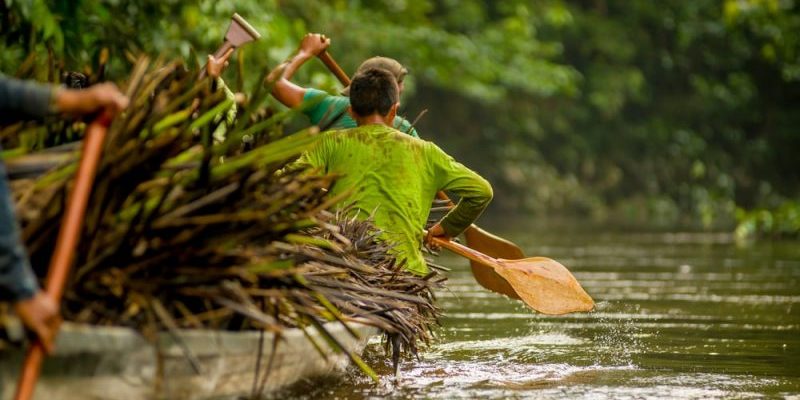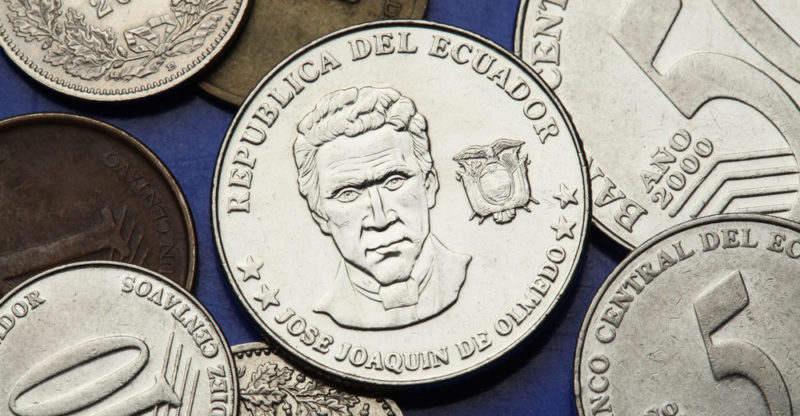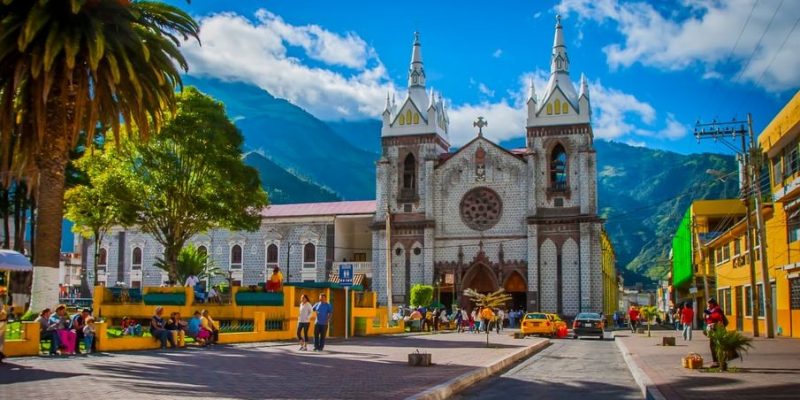We explain everything about Ecuador, how is its geography, climate and hydrography. Also, what are its features, economy and more.
Ecuador
Ecuador or Republic of Ecuador is a country located in the northwestern part of South America , bordered to the north by Colombia, to the south and east by Peru and to the west by the Pacific Ocean .
This country is divided into 24 provinces and its capital is Quito , although the city 's most populous called Guayaquil.
Ecuador has a total extension of 283,561 km 2 and within its territories outside the continent are the Galapagos Islands, located more than a thousand km from the Pacific coast.
Its extension makes Ecuador the fourth smallest country on the continent . However, it has 16 million inhabitants, which places it in the first place in South America in terms of the number of inhabitants in relation to the extension of its territory.
This is the first country in the world to obtain rights of nature , which today are guaranteed in the National Constitution of Ecuador. Consequently, 20% of the country is an ecological reserve.
Geographical characteristics of Ecuador

Because it is located on the equator, this country is located in both the northern and southern hemispheres of the planet . It has three main geographical characteristics:
- Gulf of Guayaquil. It divides the country into a northern part and a southern part.
- Andes mountains. It includes the central part of the country. There, you will find Quito (the capital of the country) and Cotopaxi, the active volcano that is located at the highest altitude in the world.
- Amazon plain. Located towards the east side of the country.
- Chimborazo volcano. At 6,313 meters high, it is the furthest point from the center of the Earth, due to the elliptical inclination of the planet. Much of the territory of this country is at an altitude of more than 1,500 meters above sea level.
Climate and hydrography of Ecuador
Although it is located on the equator, its climate is very varied thanks to the relief it presents.
Various types of climates can be distinguished . The main one is tropical , in a third of the country near the north coast and the Amazon region.
In addition, in the remaining two thirds you can see different climates subtropical humid , dry, Mediterranean , tropical savanna, tropical mountain and even desert climate .
In the coastal zone the temperatures oscillate between 20º and 33º C , while in the area of the mountains the temperatures are between 3º and 26º C.
In the capital there are pleasant temperatures almost all year round, although during the wet season (which is between October and March) temperatures can even drop below 0ºC.
On the other hand, the extreme of temperatures occurs in the city of Guayaquil, where they can reach up to 40º C.
Most of the rivers originate in the highlands and descend towards the Pacific Ocean or east towards the Amazon River.
Flora and fauna of Ecuador

Ecuador's fauna is one of the richest on the planet. Among the abundant species, in Ecuador you can see many mammals such as the monkey , the panther, the bear, the tiger , the jaguar, the puma, the tapir; Amphibians like poisonous snakes , boas, crocodiles , turtles , frogs, and birds like the macaw, parakeet, toucan , ibis, eagle, and condor.
As for the flora, it also has an abundant quantity that is protected by the Constitution. It can be seen, in the hot zones, tropical dry forests and humid forests . Yasuni National Park is the most biodiverse area on the planet.
It was in the Galapagos Islands where the scientist Charles Darwin arrived and developed, inspired by the variety of species, his theory of natural selection.
Economy and currency of Ecuador

The economy of this country is the eighth largest in Latin America . Ecuador has important natural resources from the production of bananas, tobacco, cassava, cocoa, tubers, tropical fruits and grains. They also export shrimp, sugar cane, cotton , rice, corn , coffee and hearts of palm.
The currency in use until 2000 was the Ecuadorian sucre, but it was replaced by the US dollar .
Ecuador religion

Around 84% of the inhabitants profess the Catholic religion (they usually worship local saints and virgins).
There are also other important but minor religions in his group of adherents: 4% Protestants , 2% Mormons, 5% atheists, and another 5% non-religious.
Population and language
The official language is Spanish but also, according to the 2005 census, several native languages are spoken (especially Northern Quichua and Shuar).
71.9% of the inhabitants are mestizo , 7.4% are Montubios, 7.2% are Afro-Ecuadorian, 7% are indigenous and only 6% are white.
Popular culture of Ecuador

The culture of Ecuador is very marked by pre-Columbian cultures and by the influence of the Spanish conquest.
In terms of popular entertainment, soccer occupies the first place . Followed by the chaza a sports racquet considered a national sport.
Ecuador Education
Literacy campaigns that took place before 2010 yielded astonishing results that placed this country among one of the most literate in South America , with a literacy rate of 99.78%.
It has a system of education primary and secondary compulsory and free and a system of university education and tertiary public determined based on credits or courses approved by each student.
Health in Ecuador
The main health problem in this country is the scarce number of personnel for primary and outpatient care , which ends up benefiting those who can access a paid health plan, to the detriment of those who cannot access private health care and They use the public health service.
One of the main health problems that the population presents (especially in the capital) are respiratory diseases, which amount to 37.32% of cases . In addition, heart and digestive problems and a high percentage of infant mortality are frequent: 17.93 deaths per 1000 births.
Government of Ecuador

The country is divided into provinces . Each province elects by popular vote an authority figure who is called "prefect."
It is the president who chooses a governor for each of the provinces with the exception of Pichincha, the province where the presidential office is located.
The above content published at Collaborative Research Group is for informational and educational purposes only and has been developed by referring reliable sources and recommendations from technology experts. We do not have any contact with official entities nor do we intend to replace the information that they emit.
She has pursued her studies in The United States, where she has graduated in Business and Economics and is currently finishing her Master studies in International Economics and Finance. Miss. Amputee is fluent in three languages: English, Spanish and Russian and has elementary knowledge of French and Italian. She love exploring how Collaborative Research Group can become the best tool to achieve the (necessary) educational change. .
Leave a reply
Your email address will not be published. Required fields are marked *Recent post

Sport: What Is It, Types, Risks, Features, Characteristics and Examples

Dogs: Emergence, Features, Characteristics, Feeding and Breeds

Story: Definition, Elements, Structure, Features and Characteristics

